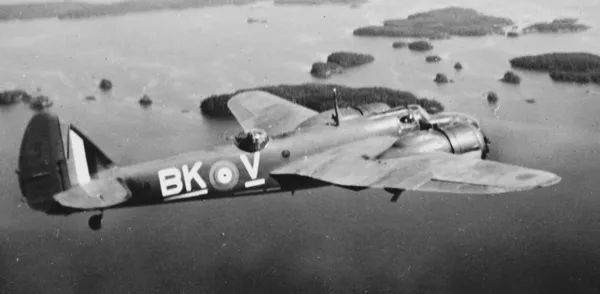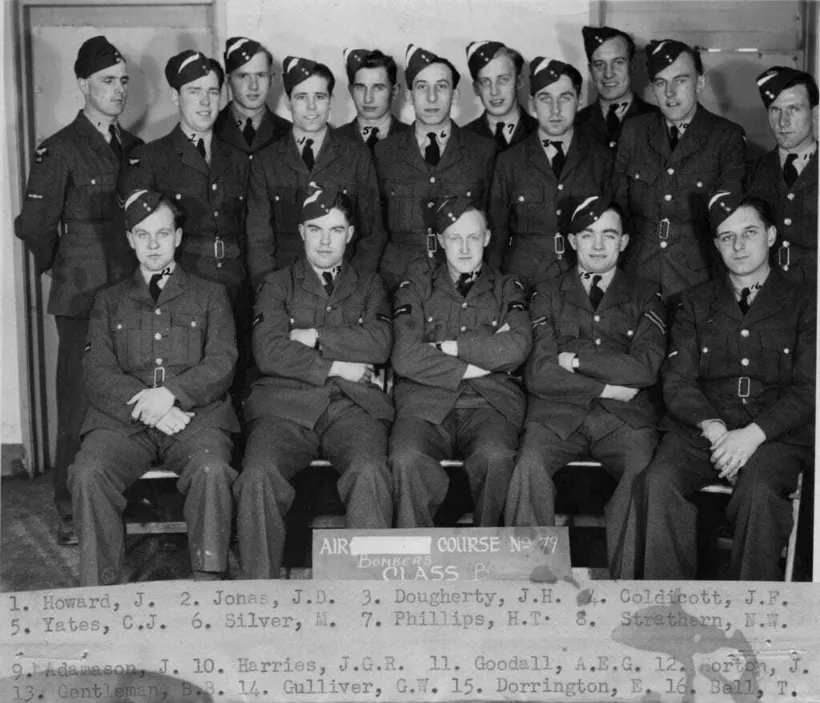Gaunce, Stanley David (Warrant Officer 2nd Class)
Killed in Flying Accident 1944-February-26


Birth Date: 1923-August-28
Born: High River Alberta
Parents: Son of Donald M. Gaunce and Sarah Gaunce, of High River, Alberta.
Spouse:
Home: High River, Alberta
Enlistment:
Enlistment Date: unkown date
Service
RCAF
Unit
7 BGS- Bombing & Gunnery School
Base
Paulson, Manitoba, Canada
Rank
Warrant Officer 2nd Class
Position
Pilot
Service Numbers
R/126261
This incident involved multiple aircraft:
- Lysander Mk. IIIA TT Serial: 2392
- Bolingbroke Mk. IVT Serial: 9890
All the above aircraft in the above list are referenced in this report.
Crew or Other Personnel
Bolingbroke 9890
Accident Card - Bristol Bolingbroke Mk. IVT serial:9890
This accident involved 2 aircraft on 1944-February-26. They are: Bolingbroke IVT s/n 9890, Lysander Mk. IIIA TT s/n 2392.
This accident involved 6 people. Gaunce SD, Kinloch JA, Pickard RE, Pickering RH, Reid TM, Wiggins WT
This accident had 4 fatalities. Leading Aircraftman Thomas Muir Reid RAFVR Killed in Flying Accident service no:1570318 Bolingbroke 9890, Leading Aircraftman James Alexander Kinloch RAFVR Killed in Flying Accident service no:1584364 Bolingbroke 9890, Warrant Officer 2nd Class Stanley David Gaunce RCAF Killed in Flying Accident service no:R/126261 Bolingbroke 9890, Sergeant Roy Eugene Pickard RCAF Killed in Flying Accident service no:R/143310 Bolingbroke 9890
Bolingbroke serial: 9890

Fairchild Bolingbroke Mk. IV, RCAF (Serial No. 9118), coded BK-V, No. 115 (Bomber Reconnaissance) Squadron, Patricia Bay, British Columbia, 1942.
The Bristol Fairchild Bolingbroke was a maritime patrol aircraft and trainer used by the Royal Canadian Air Force during the Second World War. Built by Fairchild-Canada, it was a license-built version of the Bristol Blenheim Mk IV bomber.
In 1935, the British Air Ministry issued Specification G.24/35 to procure a coastal reconnaissance/light bomber to replace the Avro Anson. Bristol proposed the Type 149, based on its Blenheim Mk I, with Bristol Aquila engines to give greater range. While the Air Ministry rejected this proposal, a Blenheim Mk I, retaining its Mercury VIII engines, was converted as a Type 149 (Blenheim Mk III) for the general reconnaissance role.The nose was lengthened to provide more room for the bombardier, with the upper left surface of the nose being scooped out to maintain pilot visibility during takeoff and landing.
The longer range also fulfilled a Canadian requirement for a maritime patrol aircraft. Consequently, Fairchild Aircraft Ltd. (Canada) of Quebec started production of the Blenheim Mk IV as the Bolingbroke (the originally intended name for the Blenheim IV). This type was nicknamed the "Bolly". After a small run of aircraft constructed to British specifications, as the Bolingbroke Mk I, Fairchild switched production to the Bolingbroke Mk IV with Canadian and American instruments and equipment. These versions also included anti-icing boots and a dinghy. One of the early Mk IV variants was the Bolingbroke Mk IVW which was powered by two 825 hp (615 kW) Pratt & Whitney SB4G Twin Wasp Junior engines. Incapable of maintaining altitude on one engine, the normal bomb load was reduced to 500 pounds on these aircraft to compensate for the low engine power. The most-produced variant was the Bolingbroke Mk IVT trainer, of which 457 were completed. A total of 626 Bolingbrokes were produced. Wikipedia
Aircraft Images
Lysander 2392
Lysander Mk. IIIA TT 2392
Assigned to No. 2 Training Command and to an unknown unit in western Canada. Collided with Bolingbroke #9890 on 2 February 1944. Both aircraft with No. 7 Bombing & Gunnery School at Paulson, Manitoba. 2 fatalities in this aircraft, Pilot Officer W.T. Wiggins RCAF and Leading Aircraftman R.H. Pickering RCAF.1942-07-11 Taken on Strength 2019-08-20
1944-02-02 Accident Category A 2022-01-09
1944-February-26 Accident: 7 Bomb & Gunnery School Loc: 1st Meridian Manitoba Names:
1944-05-02 Struck off Strength reduced to spares and produce 2022-01-09
Bolingbroke 9890
Bolingbroke Mk. IVT 9890
Delivered to long term storage. To No. 2 Training Command on 30 September 1942. Received minor damage on 12 April 1943, when it collided on the ground with Anson 8610 at Paulson. Collided with Lysander 2392 on 26 February 1944. Both aircraft with No. 7 Bombing & Gunnery School at Paulson, Manitoba. 4 fatalities in this aircraft, Warrant Officer Class 2 S.D. Gaunce RCAF, Leading Aircraftman J.H. Kinloch RAF, Leading Aircraftman T.M. Reid RAF, and Sgt. R.E. Pickard RAF. This aircraft reported as "completely destroyed". To No. 8 Repair Depot for scrapping in 4 March 1944.{{link,canadaprimary,https://heritage.canadiana.ca/view/oocihm.lac_reel_c5933/2363,RCAF - Accident Investigation File}}
1942-06-04 Taken on Strength No. 1 Training Command 2019-08-20
1943-April-12 Accident: 1 Bomb & Gunnery School Loc: Aerodrome Names: Parr | Wagar
1944-February-26 Accident: 7 Bomb & Gunnery School Loc: 1st Meridian Manitoba Names: Gaunce | Kinloch | Pickard | Pickering | Reid | Wiggins
1944-03-04 Struck off Strength 2021-12-29
Unit Desciption
7 BGS (7 Bomb and Gunnery School)
The Bombing and Gunnery School (B&GS) offered instruction in the techniques of bomb aiming and aerial machine gunnery to Air Observers, Bomb Aimers, and Wireless Air Gunners. These schools required large areas to accommodate their bombing and gunnery ranges, and were often located near water. The Avro Anson, Fairey Battle, Bristol Bolingbroke, and Westland Lysander were the standard aircraft used at B&GS schools.
RCAF.Info - RCAF Station Paulson Manitoba


